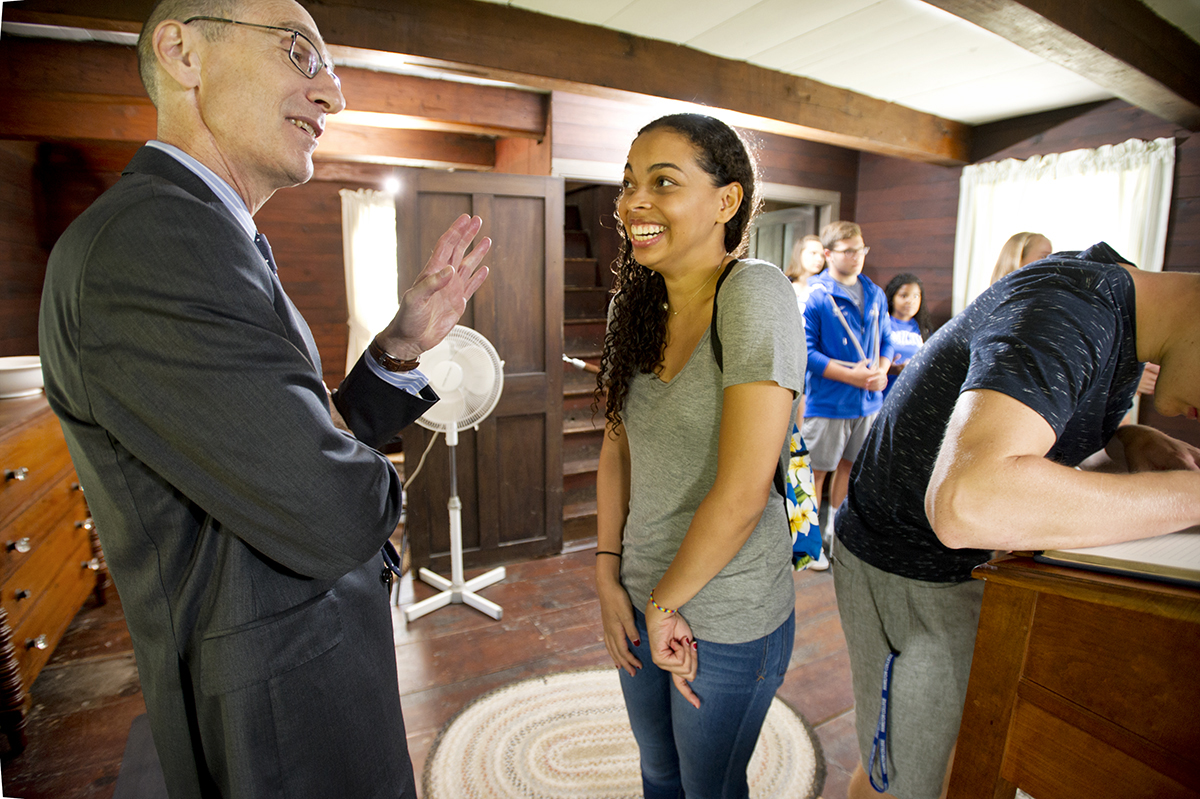
A 41-year tradition at Hamilton College continued on August 23 as members of the Class of 2020 lined up at Kirkland Cottage to sign the College Register as a symbol of matriculation at Hamilton. Kirkland Cottage has an even longer history, having been built in 1792.
Hamilton College began with one man’s dream to create a school where children of the Oneida Indians and children of white settlers could learn together. That vision of Samuel Kirkland, a Presbyterian missionary to the Oneidas, led to a plan presented in 1793 to President George Washington, who “expressed approbation,” and to Secretary of the Treasury Alexander Hamilton, who agreed to be a trustee of the new school, to which he also lent his name.
A 17-by-24-foot clapboard cottage, consisting of a large family room with an ample fireplace and three sleeping rooms above, was erected at the foot of College Hill in the spring of 1792 and served as the Kirkland family home. On July 1, 1794, Baron Friedrich von Steuben, inspector general of the Continental Army, accompanied Kirkland from the house up the hill to lay the cornerstone of the Hamilton-Oneida Academy. Among the delegation of Oneidas to attend the colorful ceremony was Kirkland’s friend Chief Skenandoa.
The school operated for two decades. Never fully realizing Kirkland’s original purpose, it instead served primarily children of white settlers streaming into central New York from New England. The academy was transformed into Hamilton College a few years after Kirkland’s death.
The cottage, which today bears his name, was relocated several times throughout the years and served various purposes, including that of a carpenter’s shop. In 1875 Edward “Old Greek” North, who taught classics at Hamilton for half a century, spearheaded an effort to acquire the house for the College and raised the $140 for its purchase.
The building was moved to a spot near the College Cemetery where it fell into further disrepair until 1925 when the former statesman Elihu Root, Class of 1864 and a longtime College trustee, saw to another relocation — this time to the heart of campus, between Soper Commons Dining Hall and Buttrick Hall. It was repaired, furnished and occasionally opened to the public.
Four years later, the Pentagon student honor society began holding its initiations and other meetings in the building, and, since 1975, members of each entering class have been invited to the cottage to sign the College Register.
Posted August 23, 2016
